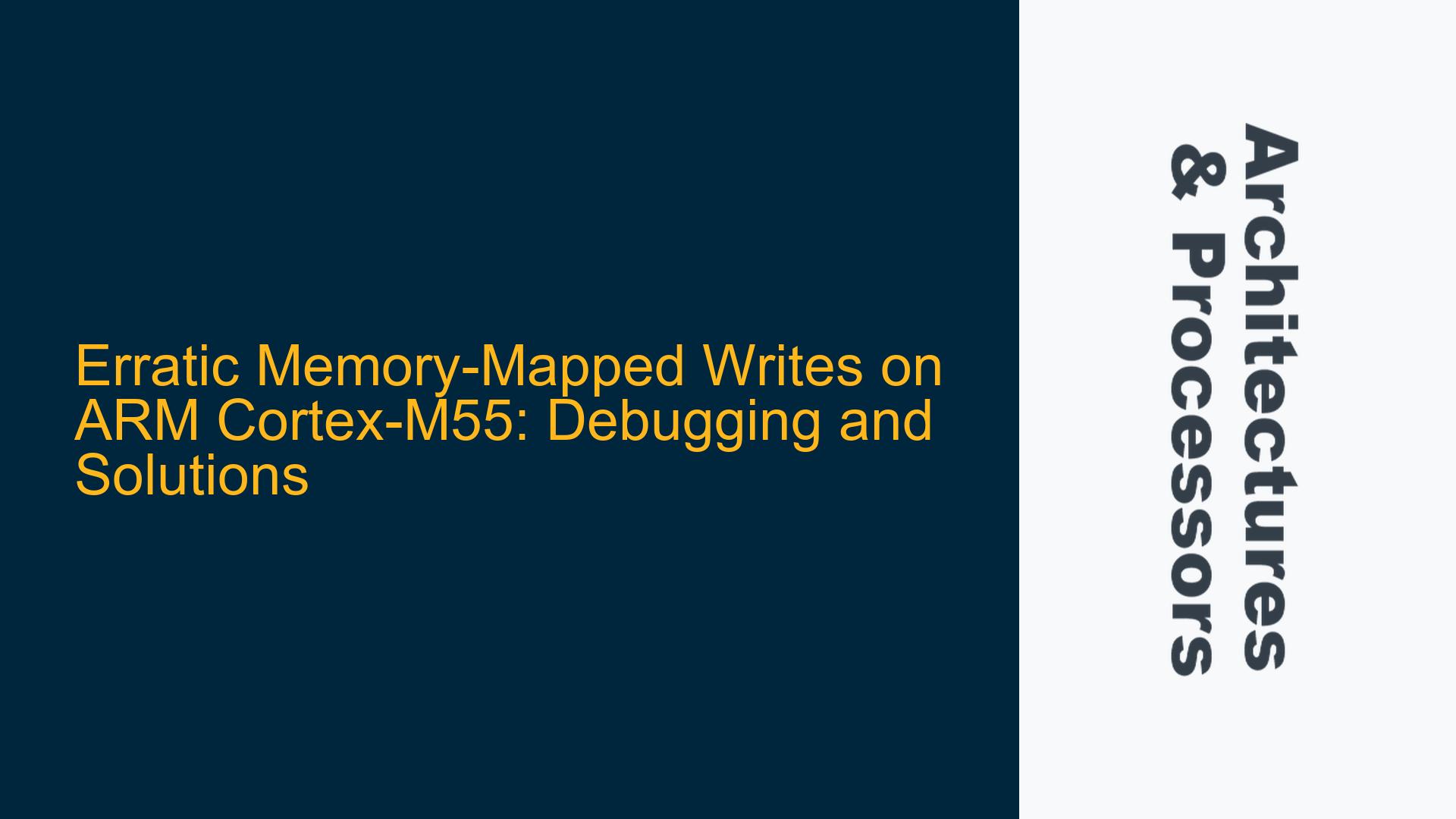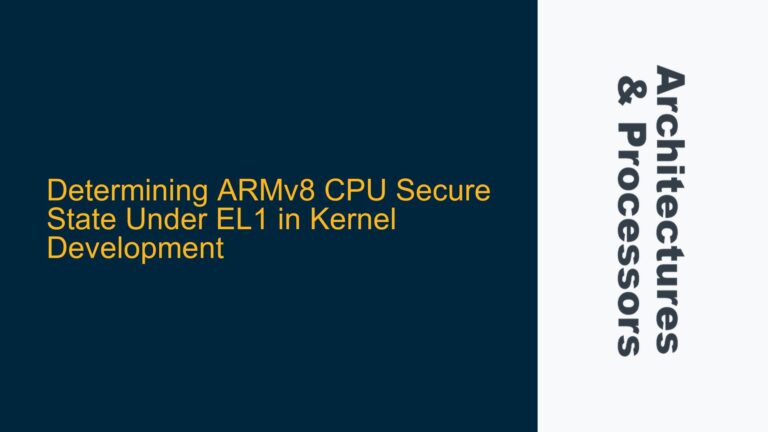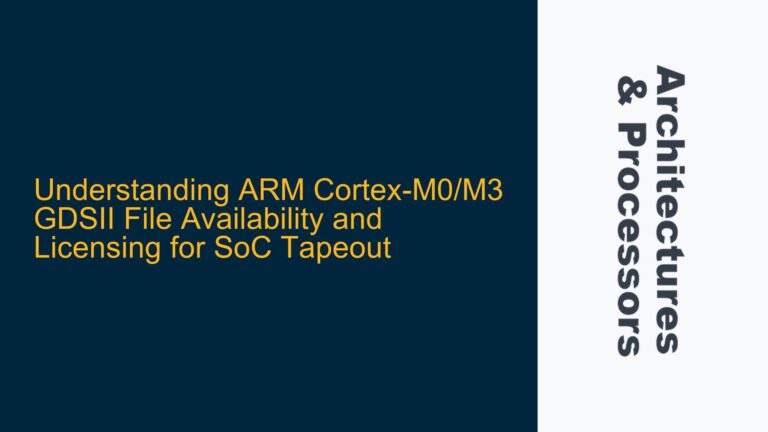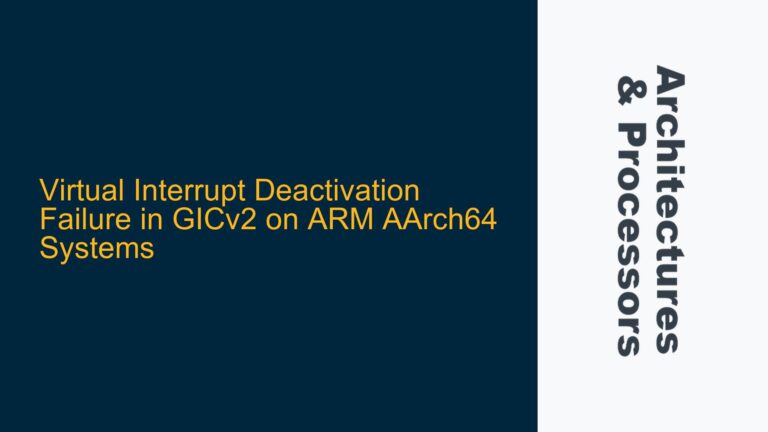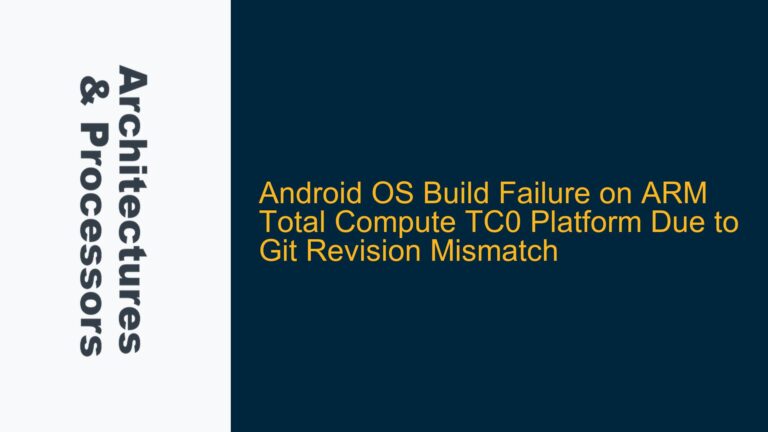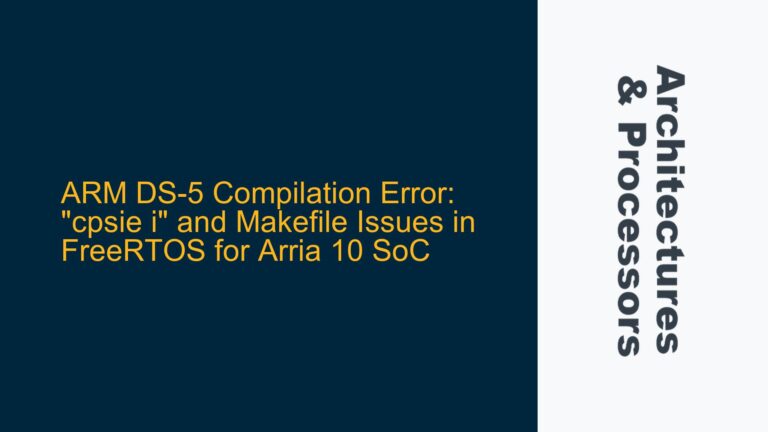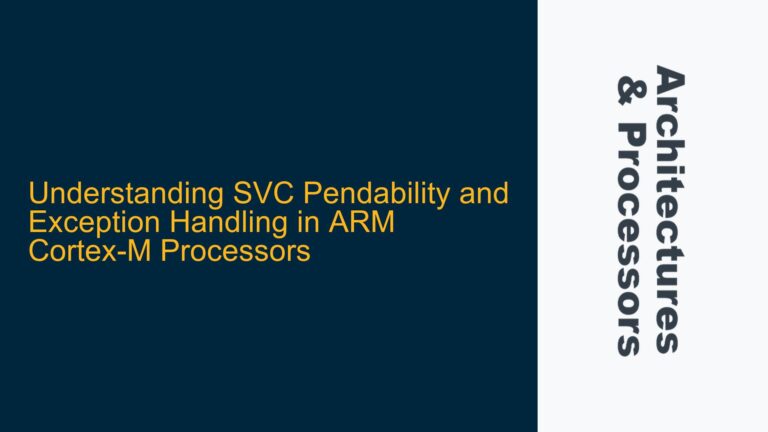ARM Cortex-M55 Memory-Mapped Write Failures and Delays
The ARM Cortex-M55 processor is a high-performance embedded processor designed for machine learning and digital signal processing applications. However, in certain scenarios, developers may encounter erratic behavior during successive writes to memory-mapped addresses. This issue manifests as skipped or delayed writes, where the observed waveform does not match the sequence of instructions specified in the software code. For instance, in a test scenario, only the write at address 0x60 is observed in the waveform, while other writes are either skipped or delayed. This discrepancy suggests a potential issue with the software-hardware interaction, particularly in the memory subsystem or the bus interface.
The Cortex-M55 integrates advanced features such as the Helium vector processing extension, which can introduce complexities in memory access patterns. Additionally, the processor’s interaction with the Network Interconnect (NIC-400) and other system components can lead to unexpected behavior if not properly configured. The fact that a Cortex-M0 processor in the same System-on-Chip (SoC) does not exhibit this issue further points to a Cortex-M55-specific problem, likely related to its more complex architecture and memory handling mechanisms.
Memory Barrier Omission and Cache Invalidation Timing
One of the primary causes of erratic memory-mapped writes on the Cortex-M55 is the omission of memory barriers and improper cache invalidation timing. The Cortex-M55 employs a sophisticated memory system that includes caches and write buffers to optimize performance. However, these optimizations can lead to out-of-order execution and delayed writes if not properly managed. Memory barriers are essential to ensure that memory operations are completed in the correct order, especially when dealing with memory-mapped I/O.
In the provided code, the absence of memory barriers (DSB, DMB, or ISB instructions) between successive writes to memory-mapped addresses can result in the observed erratic behavior. The Cortex-M55’s write buffer may hold onto writes for an extended period, delaying their commitment to memory. Additionally, if the cache is not properly invalidated before or after the writes, stale data may be read or written, leading to inconsistencies between the software instructions and the observed waveform.
Another potential cause is the timing of cache invalidation. The Cortex-M55’s cache must be invalidated before performing memory-mapped writes to ensure that the data being written is not cached. If the cache is not invalidated, the processor may write to the cache instead of the actual memory-mapped address, leading to skipped or delayed writes. This issue is particularly relevant when dealing with non-cacheable memory regions, such as those used for memory-mapped I/O.
Implementing Data Synchronization Barriers and Cache Management
To address the erratic memory-mapped writes on the Cortex-M55, it is essential to implement data synchronization barriers and proper cache management. The following steps outline the necessary actions to ensure reliable memory-mapped writes:
Step 1: Insert Memory Barriers Between Successive Writes
Memory barriers are crucial for enforcing the correct order of memory operations. In the context of the Cortex-M55, the DSB (Data Synchronization Barrier) and DMB (Data Memory Barrier) instructions should be used to ensure that all previous memory operations are completed before proceeding to the next write. The ISB (Instruction Synchronization Barrier) instruction can also be used to flush the processor’s pipeline, ensuring that all subsequent instructions are fetched with the correct memory state.
For example, after each write to a memory-mapped address, a DSB instruction should be inserted to ensure that the write is committed to memory before the next write is initiated:
#define HW64_REG(ADDRESS) (*((volatile unsigned long long *)(ADDRESS)))
#define ACCEL_BASE (0x33000000UL)
data_64b = 0x00F4ED90F1C87960;
HW64_REG(ACCEL_BASE) = data_64b;
__DSB(); // Ensure the write is completed before proceeding
data_64b = 0x005B6762F7F3B940;
HW64_REG(ACCEL_BASE + 0x10) = data_64b;
__DSB(); // Ensure the write is completed before proceeding
Step 2: Invalidate the Cache Before Memory-Mapped Writes
Cache invalidation is necessary to ensure that the Cortex-M55 does not write to cached data instead of the actual memory-mapped address. The DC IVAC (Data Cache Invalidate by Virtual Address to Point of Coherency) instruction can be used to invalidate the cache for a specific memory region before performing a write. This ensures that the processor writes directly to the memory-mapped address, bypassing the cache.
For example, before writing to a memory-mapped address, the cache should be invalidated:
void invalidate_cache(uint32_t address) {
__asm volatile("DC IVAC, %0" : : "r"(address));
}
data_64b = 0x00F4ED90F1C87960;
invalidate_cache(ACCEL_BASE);
HW64_REG(ACCEL_BASE) = data_64b;
__DSB(); // Ensure the write is completed before proceeding
Step 3: Configure the Memory Region as Non-Cacheable
To prevent the Cortex-M55 from caching memory-mapped I/O regions, the memory region should be configured as non-cacheable in the Memory Protection Unit (MPU) or the system’s memory management unit (MMU). This ensures that all writes to the memory-mapped addresses are directly committed to memory, without being cached.
For example, the MPU can be configured to mark the memory region as non-cacheable:
void configure_mpu() {
MPU->RNR = 0; // Select region 0
MPU->RBAR = ACCEL_BASE & 0xFFFFFFE0; // Base address
MPU->RASR = (0x1 << 28) | (0x3 << 24) | (0x0 << 19) | (0x1 << 18) | (0x1 << 17) | (0x1 << 16) | (0x1F << 1) | 0x1;
// Configure region as non-cacheable, non-shareable, and full access
MPU->CTRL |= 0x1; // Enable the MPU
}
configure_mpu();
Step 4: Verify the NIC-400 Configuration
The NIC-400 interconnect plays a critical role in managing data transfers between the Cortex-M55 and other system components. It is essential to verify that the NIC-400 is properly configured to handle the memory-mapped writes from the Cortex-M55. This includes ensuring that the address decoding, arbitration, and priority settings are correctly set up to prevent delays or conflicts in data transfers.
For example, the NIC-400 configuration registers should be checked to ensure that the Cortex-M55 has the appropriate priority and access rights to the memory-mapped addresses:
void verify_nic400_config() {
// Check NIC-400 configuration registers
uint32_t nic400_config = NIC400->CONFIG_REG;
if ((nic400_config & 0x3) != 0x3) {
// Adjust configuration to ensure Cortex-M55 has priority
NIC400->CONFIG_REG |= 0x3;
}
}
verify_nic400_config();
Step 5: Analyze the Waveform with Detailed Timing Information
To further diagnose the issue, it is recommended to analyze the waveform with detailed timing information. This includes examining the exact timing of the writes, the state of the write buffer, and the interaction between the Cortex-M55 and the NIC-400. Tools such as logic analyzers or simulation debuggers can be used to capture and analyze the waveform in detail.
For example, the waveform should be analyzed to identify any delays or conflicts in the memory-mapped writes:
void analyze_waveform() {
// Use a logic analyzer or simulation debugger to capture the waveform